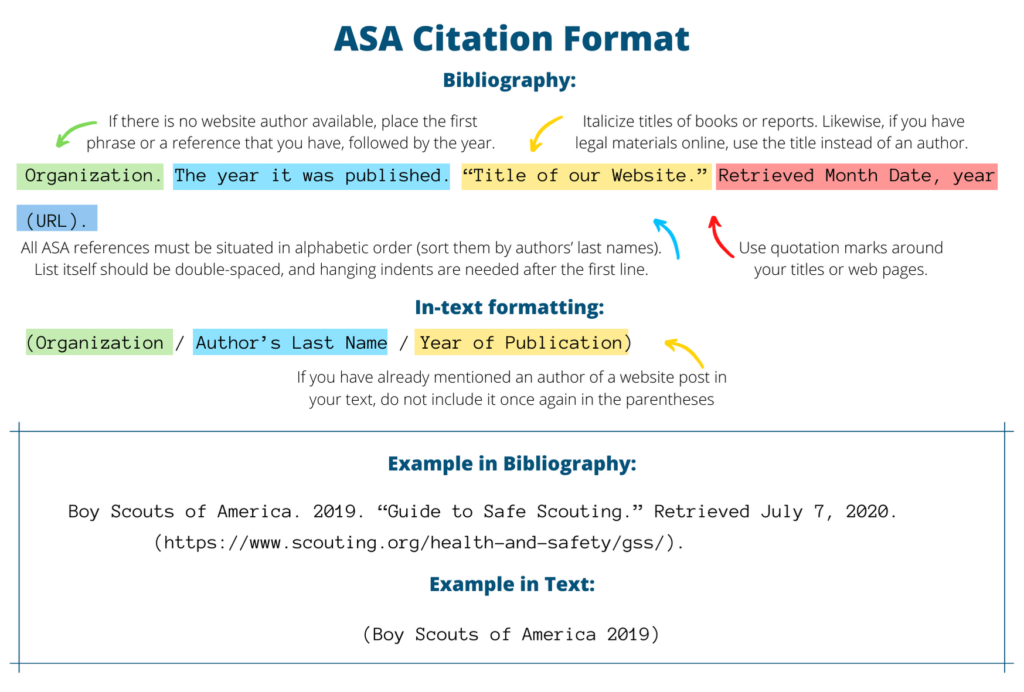ASA Citation Guide: Useful Tips & Tricks
ASA Citation Guide: Useful Tips & Tricks
Essay writing is a pretty complex task by itself, but it’s the formatting that usually makes students panic most.
Citing sources is essential to avoid plagiarism, and if you don’t know ASA style, you can make mistakes that might ruin your academic record. So, how to cite in ASA correctly?
Fast ASA In text Citation Help
Writing a sociology research paper in ASA format demands a structured approach to citations and sociological analysis. If you’re unsure about how to apply ASA formatting rules or organize your research findings, Edubirdie can guide you through the process. Their writers specialize in sociology and will ensure that your paper meets the highest academic standards. The strength of an essay depends on how convincing its author’s point of view is. To be convincing, though, it’s important to back all words up with relevant sources. It can only be done with in-text citations. Properly formatted ASA (American Sociological Association) in-text citations have some general rules — for example, students have to put works like books, collections of stories, movies, as well as titles of journals and magazines into italics. Shorter stories and articles’ titles must be in quotation marks, and for every phrase that is not common knowledge, you must provide an in-text reference.

Other general rule concerns page numbers. If a source has pages, add them only when citing something very specific, like a particular idea from a certain passage or when providing direct quote. Otherwise, page numbers aren’t needed. Considering how many types of sources exist, it might be tough to figure out when to cite what, so let’s look at how ASA citation format works for each of these categories.
One Author
ASA citation machine is great for showing how authors should be placed in text, but with most common sources’ types, it’s best to memorize the formatting rules to facilitate essay-writing process. If work has one author, all you need is his/her last name and date. Put last name in the text itself to introduce the author and add the date of source’s publication in parenthesis right after that. If you need to mention page numbers, put them after date, separating them with a colon. Check this example:
Another option involves putting both name and date, as well as page number if there is any, into parenthesis.
Two Authors
According to ASA style guide, same system should be applied when there are two authors. All you need is unite them with “and”.
Three Authors
When you mention three authors for the first time, name them all and unite them with “and”.
When citing these authors again, mention only the first one and add ‘et al.’ afterward.
Four and More Authors
When there are more than three authors, name the first one only. Refer to others through “et al.” from the beginning like in ASA citation format example above.
Organization as an Author
As per ASA style guide, treat organizations’ names like those of usual authors. Just use the full name with no abbreviations.
Unknown Author
When no author’s name is available, ASA format requires mentioning the first words of the entry, which is usually the title. Look at rules above for proper titles’ formatting.
Authors with the Same Last Name
ASA citation machine won’t help in case you’re citing two or more different works created by authors sharing one last name. It just won’t know whether this name was already used in text. So, if you have Lynda White and John White as two different writers, make sure to mention their initials like this: L. White (2012) and J. White (2013).
Several Works by One Author Published in the Same Year
This is another example where ASA citation machine won’t help. It can’t know how many works of one author you’re mentioning in text. This is why knowing basic rules of ASA manual is important. It’s simple: assign a letter to each source so you and everyone else could easily differentiate them. It should look like this: (Carter 2015a); then (Carter 2015b).
Multiple Sources in One Citation
To create ASA citations for several works that are mentioned in the course of one sentence, use semicolons.
Electronic Sources Citation
ASA in-text citation is identical for electronic kinds of sources. Mention author and date like in previous examples.
Unknown Date
There will be sources with no date that might seem confusing at first. Considering how popular electronic works are, it’s not surprising, so don’t let it bother you. Simply put “N.d.” instead of proper date.
Story/Article From Anthology
If you need to cite only one story or article from a big collection, mention the name of that one author whose work you’re regarding. Follow examples above for rules about dates and page numbers.
